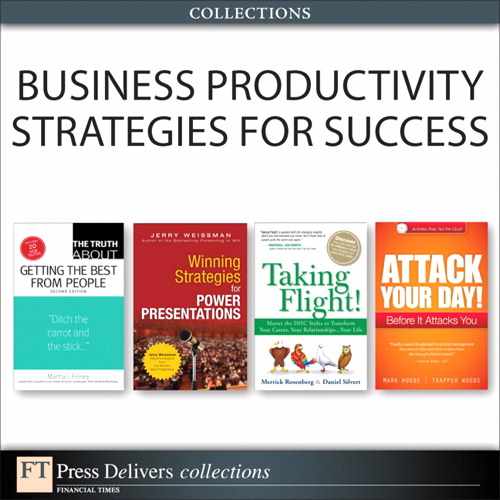73. How to Interview Like a Television Anchorperson
Seven Easy Steps
The Aspen Ideas Festival is a high-profile annual summer conference at which some of the best minds in diverse fields (among them culture, economics, politics, science, and education) come to share their concepts with audiences at the Festival. To avoid having these big thinkers give tedious unilateral lectures, most of the sessions are interviews conducted by respected journalists or peers.
The interview approach has also caught on at investment conferences where, rather than having senior executives of presenting companies deliver one-way PowerPoint presentations, they are interviewed by financial professionals in what are called “fireside chats.” The interview approach has long been a staple of large-scale business conferences where prominent industry thought leaders are interviewed by select individuals.
Someday, you might be selected to be that individual.
Unfortunately, most of the individuals who are given this responsibility are so awed by their guest’s prominence, they ask only innocuous questions, leaving the guest no choice but to deliver a tedious monologue.
This is not to say that, if you become an interviewer, you should swing to the other end of the scale and attack your guest with the slings and arrows of the late Mike Wallace or the present Bill O’Reilly. Instead make your role model Charlie Rose or Barbara Walters, both of whom have the unique ability to draw interesting stories out of their guests. While a businessperson can’t expect to match Mr. Rose’s or Ms. Walters’s professional acumen, it is possible to lead your guest through an interesting session with these seven easy steps:
1. Set the context. Most interviewers fail to remember the First Commandment of presentations: Tell ’em what you’re gonna tell ’em. Right at the beginning of your interview, establish a roadmap of what subjects you intend to cover.
2. Navigate. Most interviews bounce around randomly. To avoid such rambling, the interviewer must establish a structure and then keep it on that track. One of the simplest and clearest structures is to follow a timeline, ticking off the milestones by dates. Another is to organize the interview in a series of numbered steps. As you read in Chapter 26, “David Letterman’s Top 10,” this simple technique brings order to what could otherwise be chaos. Lead your subject into the details of a time period or a number, and then move them to the next period or number in the sequence.
3. Be transparent. The influence of television’s current cult of belligerent personality interviewers has driven many nonprofessional interviewers to insert their own points of view, and some to do so aggressively. Wrong!
A Wall Street Journal article written by Peter Funt recounted “a recent interview Lawrence O’Donnell conducted on MSNBC with the filmmaker and activist Michael Moore. Mr. Moore spoke a total of 1,034 words, while Mr. O’Donnell—whose job, after all, was to ask questions—spoke almost as many: 900. The host was so intent on both asking and answering questions that at one point Mr. Moore said jokingly, ‘Thanks, Lawrence, for coming on the show tonight.’”
As the son of Allen Funt, the creator of the famous “Candid Camera” television series, Peter Funt writes with authority about interviewing. He went on to say that “The best interviewers do their homework, put their own opinions aside, keep questions brief, and listen closely for possible follow-ups.”1
Charlie Rose and Barbara Walters do just that. Their talent is their ability to interview and yet be transparent at the same time. Mr. Rose described his interviewing techniques during his own interview at the 2012 Aspen Ideas Festival:
It is often said that the most important question is, “Yes, but..” But even today, the most important questions are...“Why?” and “Why not?” “What were your choices?”
I’m always conscious of the sense that, if I’m looking and talking to someone, you always want to know who their heroes are, and who’s influenced them.2
The subject of any interview is the interviewee who has achieved whatever he or she has accomplished to get them invited to be interviewed in the first place. You can gently nudge your guest toward salient points along the way, but let the star have the spotlight.
4. Summarize. Interviewees, who have lived every moment of their own lives, tend to get into granular details during the interviews. Even articulate subjects must be netted out. At salient milestones, recap the high points of what your subject has said. Whenever possible, go beyond summarizing to provide perspective by adding information about the subject that you have researched in advance.
5. Involve the audience. An interview does not exist in a bubble. Although silent, the audience is a third party in any interview. From time to time, turn to your audience for a reaction. Get them to respond with applause or a show of hands or, if there are microphones available, a few verbal comments—with an emphasis on “a few.”
6. Cross-reference. The interview does not exist as a floating point in time, particularly if it is part of a conference that has other events such as panel discussions or speeches. You can make references to related subjects or events before or after the interview or to points made earlier in the interview itself. Do both, and do it often. Weave a web of linkages.
7. Draw best practices. The anecdotal nature of interviews makes the point of view linear. The interviewer can add depth and breadth by drawing out lessons learned. At pivotal points, ask your guest what worked well and what he or she would have done differently. From that, your audience will learn what to do, and what not to do. Give your audience extra added value beyond the view of the celebrity.
Following these seven steps might not get you on national or even cable television, but they will keep the tedium out of your interview and, more important, earn you the gratitude of your audience.
